Carcassonne. Fortress living through time
The story of Carcassonne should begin with the fact that the length of its walls more than 3 km; and the towers on them - 52.
People settled here long ago. Not by the sea - pirates could attack there, but so that from the mountain they could control the road from north to south.
In the period between 43 and 30. BC. The Romans founded a colony of Julius Karkaso here, and at the same time a settlement appeared - Castellum Castello. The word castellum denoted a small fortified town, where the civil and military administration of the settlement was located, which was controlled by the praetor. Judging by the magnificent mosaics discovered in 1923 under the count's castle, this Roman official had his residence there - a praetorium, which he arranged with great taste, and the fortifications there were purely formal. To protect against nomads in the III century AD. the settlement was surrounded by a wall in which there were four entrances and thirty towers of the Gallo-Romanesque type — that is, round in plan from the outside, but square from the inside, as they were more durable. Their foundations were filled with stone to the level of the patrol track that led along the ridge of the wall. On the second floor of the towers, two doors led to the curtains, and three windows looked outwards, and both the doors and the windows were crowned with a brick vaulted arch. To protect the archers, the windows were probably covered with wooden shutters, like cannon ports on ships. The top floor, which climbed the ladder, could be isolated. And all this was sealed with the strongest Roman cement, so that the strength of these walls was such that many of them survived.
Who only then did not besiege Carcassonne: and the renowned Chlodwig, who had cut the cup in Soissons, and the Arabs, and the major-domo Karl, nicknamed the Hammer. Legend claims that during this siege, the city became known as Carcassonne, after one Arab lady threw a pig from the tower on the heads of the Franks. Those saw that the food in the besieged city was pretty and lifted the siege.
After that, the lady ordered to blow pipes. Hence the name of the city - Carcass-sonne, that is, Carcass sound! Today, her sculpture adorns the entrance to the castle and who knows, maybe in this strange stories there really is something ...
Finally, Carcassonne went to the Counts of Tranquavels, and here they also decided to build a castle in the city. In 1130 - 1150 It was erected, and it turned out that the new castle of Viscount of Carcasson is, without a doubt, the most modern castle in the West. The fact is that the traditional castle in the West at that time was a donjon castle - the main tower, and this one was built according to a concentric scheme.
Towers surrounded the perimeter: the angular Saint-Paul in the south, two towers at the east gate, the Barracks tower and the corner Commandant’s tower, which defended its northern part. Along the towers and curtains were built bypass wooden galleries with ledges for mounted loopholes. Later, architect Viollet-le-Duc partially restored them and today you can even go over them and see how they were arranged in those years distant from us.
The two towers framing the entrance to the castle were connected by a hinged structure with a vaulted arch, the mounted loopholes of which ensured the protection of the gate. The entrance itself could be closed by a lifting grille, behind which were iron-ironed gates, and then a second lifting grille. In order to avoid possible betrayal, the lifting grids were controlled from different places, so it was physically impossible to open them at the same time. A smaller tower was built into the north façade - the Degrè Tower, which complemented the defensive functions of the castle.
Interestingly, the towers have the shape of a drop and are divided into four floors. On the first and second floor there are vaulted round halls, and embrasures are cut into the walls; on the third - an exit to the patrol track. From the walkway covered with boardwalk, you can climb the stairs to the fourth floor, where the jagged part of the walls and wooden galleries are located. The lower part of the towers and clumps expand at ground level. This was done so that stones thrown from wooden galleries would bounce off inclined surfaces and fly off into a crowd of enemies crowded near their foot.
Using galleries and embrasures cut in a staggered manner so as not to weaken the walls, archers could cross-fire the entire area around the castle and keep the enemy at a remote distance. If the enemy reached the ditches, the shape of the narrow loopholes allowed them to shoot and down. The base of the walls and the tower also remained under the gun of the archers who were in the neighboring towers, and they were also reachable for firing from the gaps between the battlements. In the case of the penetration of the enemy into the castle, the internal structure of the latter made it possible to fight in each separate tower and in each of its halls.
In 1150, the city was consecrated in the Romanesque Cathedral of Saint-Nazaire. And literally right there in the county of Toulouse, the spread of the Qatari faith occurred, which the Pope considered heretical and organized a crusade against her.
In 1209, in August, the French knights, led by Simon de Montfort, began the siege of Carcassonne, and two months later it was taken, most likely as a result of betrayal, and the inhabitants were expelled from it. Then Louis VIII and Louis IX began to strengthen Carcassonne, and the work started by them was carried out somewhere between 1228 and 1239, and, by the way, very timely, because already in 1240, the fortress barely withstood the onslaught of the troops of the young Count of Tranquawel who tried to reclaim his father's inheritance. Only reinforcements from Burg, sent by the frightened king, prevented the successful completion of the surprise attack.
Through the efforts of Queen Blanca of Castile and Louis IX Saint, the outer belt of the walls was built around the third - a lower one, which means that it was under the arrows from the city wall. The belt consisted of low towers with "open throat", i.e. facing inward, as well as several towers, high and round, which could play the role of small autonomous "fortified points." The most powerful of them were the towers of Grand Burla and Lavad. In addition, the towers of this wall had a number of hidden gates in case of an unexpected attack.
The new belt protected the basement of the curtains and towers of the second wall from direct stones released from stone stones, since it was not possible to install the latter in a relatively narrow space between the walls, where the ditch also passed (today it is filled up!). Such a disposition created something like an artificial canyon, and prevented the deployment of troops and the delivery of food to the troops besieging the city. In this case, the enemy was subjected to counterattacks, unable to disperse or retreat. In addition, the approaches to the gate were guarded by semicircular barbican. The Od Gate was protected by a zigzag fence as well as a natural precipice. A long “caponier” (narrow protected path) descended to a large fortified gate on the banks of the River Aude, the course of which was later changed. After all, it was important, as long as possible to maintain access to water. True, these gates were subsequently destroyed, and in their place was built the church of Saint-Jimer.
In addition to the four main gates of the internal defensive belt — the Narbonn in the east, the Aude in the west, Saint-Nazaire in the south, and Rodez in the north, there were many secret passages from the fortress, which, if necessary, were easily repaired. They allowed the garrison soldiers to fall from one belt of defense to another unnoticed by the enemy.
Among the outer towers is the Trezau Tower, the name of which indicates that it was used to store the royal treasury (tresorerie). From the side of the city, this tower is completely flat and is made with a stepped spitz in the Flemish fashion, and in addition it is topped with two guard posts. The height of the tower 30 m, and the thickness of the walls - 4! Well, the Narbonne Gate, located next to it, is perhaps the most beautiful example of medieval fortified gates.
Like the Count's castle gates, they include two twin towers connected to each other right up to the roof with a high wall, hanging over the arches of a narrow entrance (width of the entire 2,5 m) between the two towers with a height of 25 m each, and this is without a roof! Accordingly, both of them have a protruding part in front (like the bow of a ship) with embrasures. Such a construction made the towers stronger, and they were better able to resist stones released from throwing machines. In the vaults there were holes that preceded the lifting grid, so that those who rushed in through this gate could easily be poured over with boiling water and hot resin. Both towers could be easily isolated along with the garrison, as they calculated for long-term resistance, were built as a donjon, and were supplied with everything necessary for a long siege in wartime.
Above the gate from the side of the walkway between the belts is a niche under the three-blade arch, and in it is a statue of the Virgin Mary (XIV century). The sculptural image of the baby Jesus, whom Mary held in her arms, has not survived. In one of the towers is a “hall with a tank”, it is still possible to see a huge water tank with a capacity of about one hundred cubic meters. The hooks located above the loopholes could be used by soldiers to hang crossbows on them, or, possibly, for shutters that close the loopholes. On the second floor of each tower there is a door that opens onto a corridor guarded by sentries.
In the spacious and beautiful halls of the second floor of these gate towers there is both a fireplace and a stove. Between them there is a small room, the only function of which is to protect the doorway in the gate. The third floor inside is not divided and represents a huge hall - “Knight's Hall”, illuminated by five Gothic windows facing the city.
Starting from the XIV century, Carcassonne lost its military significance, and no one tried to seize this inaccessible place. And when, in 1353, the Hundred Years War finally reached Languedoc, the Black Prince’s army burned down the Lower City, but passed the fortress along the distance of the arrow.
However, its walls and towers eventually began to collapse and there were people who called for all of this to be preserved. In 1840, the restoration work of the city cathedral began. But then, for financial reasons, the future Emperor Napoleon III, crossed out the city from the list of historical monuments.
Here again, the “man of the pen” intervened: the famous French writer Prosper Merimet, who became the inspector general of historical monuments, sent an energetic message to Paris, proving the historical significance of Carcassonne. Reconstruction of the castle of the count and the walls of the city commissioned architect Violle-le-Duc. Thanks to this, a unique monument has been preserved for posterity. Since then, the dilapidated buildings are regularly updated, so that they look old just enough to shoot a historic movie here and attract tourists from all over the world.
Well, now let's take a little walk around Carcassonne and look at it from the inside. Typically, tourists get here through the Narbonne Gate, and we, too, will not be an exception to this rule. Directly in front of us are two huge towers (to the right of which there is the Trezzo Tower), and before passing between them, let us glance left and right to the space between the two rows of walls. You will immediately feel that the height of the inner wall is simply amazing. By the way, do not be surprised if this place between two rows of fortress walls, where the moat used to be, will seem familiar to you. After all, it was here that many scenes of the films “Robin Hood” with Kevin Costner and “Joan of Arc” by Luc Besson were filmed. Now we pass a few pointed arches and gates and we are already inside the city. Houses, as it should be, are molded one to the other and are only two floors high, and on the ground, as a rule, some shop, cafe or small restaurant. In the tourist season, cars do not drive around the city, but for lovers of the exotic there are carts harnessed with Percherons and, of course, a tourist train with several carriages.
The most interesting thing is to start bypassing the city around the perimeter, so we will immediately turn left and go along Plo Street along the southern wall to the Saint-Nazaire and Saint-Cels Cathedral, a typical Gothic cathedral with beautiful carvings and colorful stained glass windows. In its southern part there is a fragment of the slab of Simon de Montfort's tombstone, which took the city and the castle, and was killed in 1218 during the siege of Toulouse with a stone from a catapult. Behind the cathedral there is an amphitheater (this is a later construction) of the Theater. Jean Deschamps, where you can see old plays. But we turn from the cathedral to the street St. Louis, then to the street Violle-le-Duc (where the monument is set to him) and we find ourselves at the entrance to the Barbican castle of the Counts of Trankavely. The entrance to the city is free, but you have to pay for the entrance to the castle. Further, the bridge over the moat, at the bottom of which, as in the Middle Ages, delightful kitchen gardens, and, finally, the castle itself are broken. Tourists bypass it around the perimeter of the walls through the towers, and all three floors are open to the public, where you can see a lot of interesting things. On the second floor there is a museum of stone sculptures, where there is a marble fountain for ablution of the 12th century, and an early Christian sarcophagus of white marble from the 5th century, and a very interesting effigy - a gravestone statue of a 13th century knight brought here from Lagrass Abbey located not far from the town. It is interesting in that on his surcoat - patched clothes, which were worn over the chain mail, there are overlaid images of two Coats of Arms of Carcassonne with a border. Most likely, this statue is one of its owners, but not Simon de Montfort, as it is written on some sites of ours, as well as Spanish. The fact is that the Emblem of Montfort is a rising lion, not a three-tower castle! That's just the safety of it, unfortunately, effigiya suffered greatly, but the French themselves are to blame, or rather their French Revolution, during which all the monuments of the former aristocracy were most actively destroyed and destroyed throughout the country! Here on the wall is visible a preserved fresco depicting fighting Christian and Muslim horsemen.
The view from the windows and loopholes of the city itself located below the castle and across the river Aude is fascinating, but in order to go there it will take time, but, as a rule, it is always not enough for tourists. It is better not to look into the 12th century torture inventory museum on Saint-Jean Street - the torture equipment and wax figures of the tortured there are not for the faint-hearted. But to walk after visiting the castle on the street Raymond Roger Trankavel, who died in the dungeons of his own castle, just need - because you have to, finally, and stock up with souvenirs. Well - something, but they are missing here. There are shops with antiques and souvenirs, pastry shops and many small hotels where, in principle, you can stay and live for a while, exploring this “city that has lived through the centuries”. Here, for example, a tapestry shop, medieval wines are sold according to recipes from the 13th century, including the famous hypocras, which were served to the French kings for the night in heated form (then you always regret that you didn’t buy a bigger bottle!) whose sweet tooth doesn’t get through - there are cookies for every taste. Moreover, it is packed in tin boxes of the end of the 19th-beginning of the 20th centuries with cramped images and color printing. You will immediately be given a chance to try it, after which you will not be able to buy anything here, you will most likely just not succeed, especially if you have children. For the latter, there is a lot of every kind of toy. weapons and armor. But just like for adults, everything here is designed for a very undemanding taste. In the castle itself, in one of its halls, there is an excellent bookstore, where there is absolutely everything on medieval themes, and in various languages, including rare editions of Viollet-le-Duc himself, only prices are exorbitant!
Sated with everything you see, you leave Carcassonne - the city-fortress living through time. But do not forget to look at the exit in the left tower at the gate, where the tourist center is located. But you should not be interested in him, but in the middle of a water tank, which is empty today and where everyone throws coins to someday be here again!
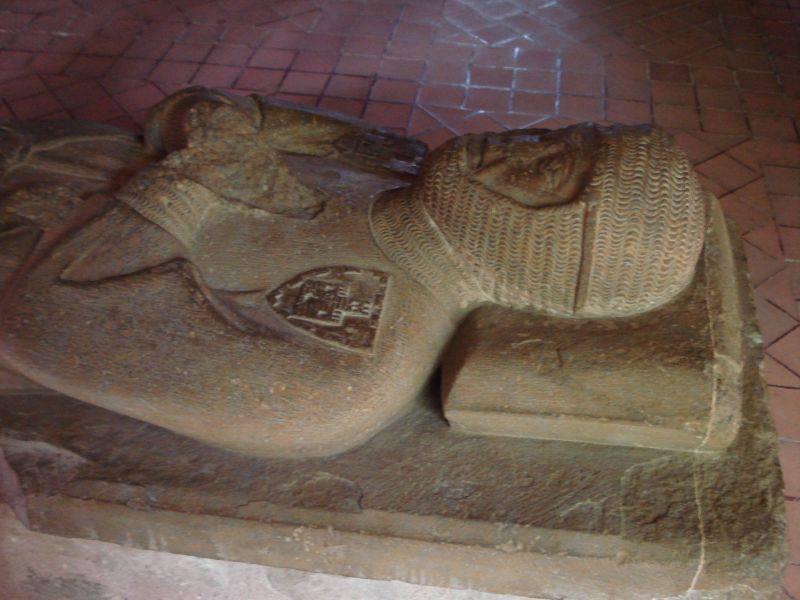
Effigia from Carcassonne. Front part. On the chest is the image of the coat of arms of the Counts of Tranquails.
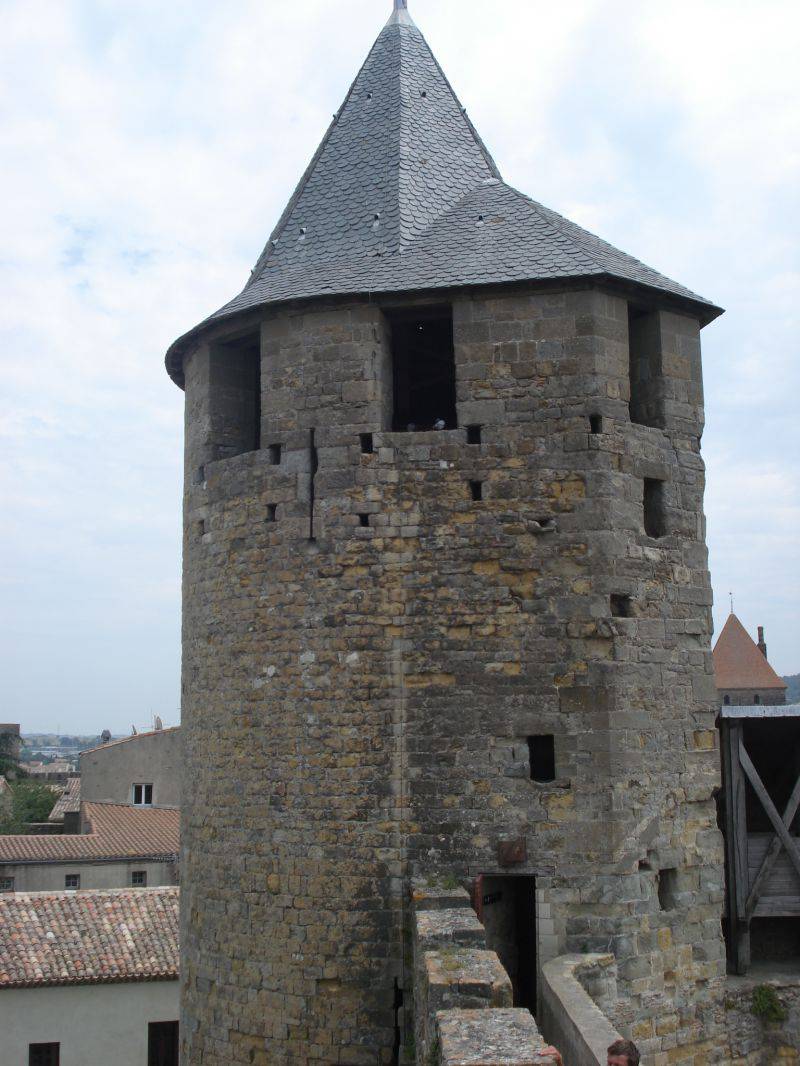
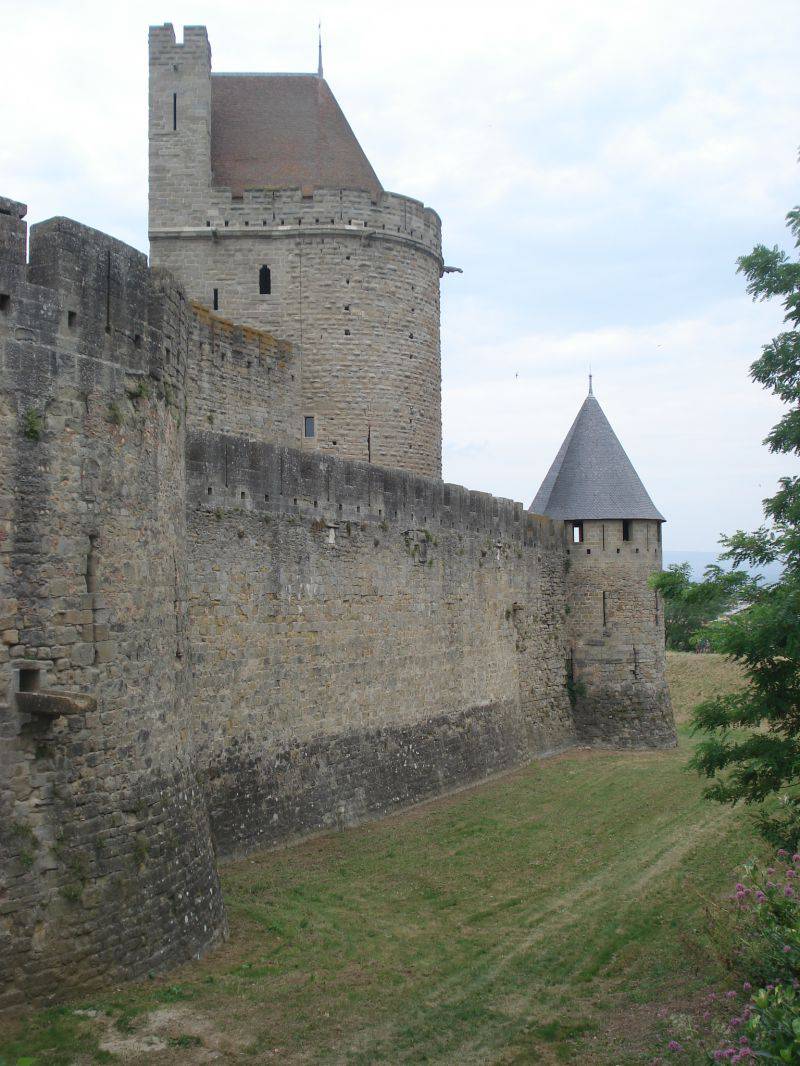
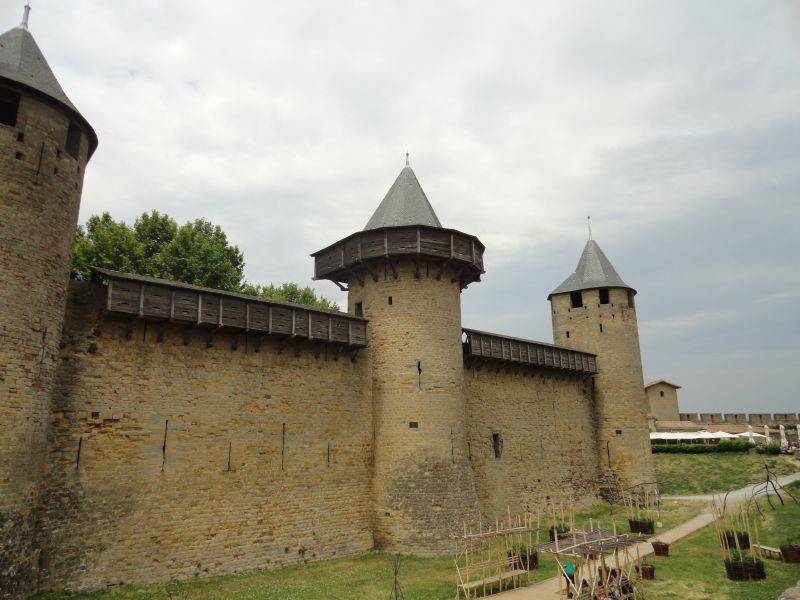
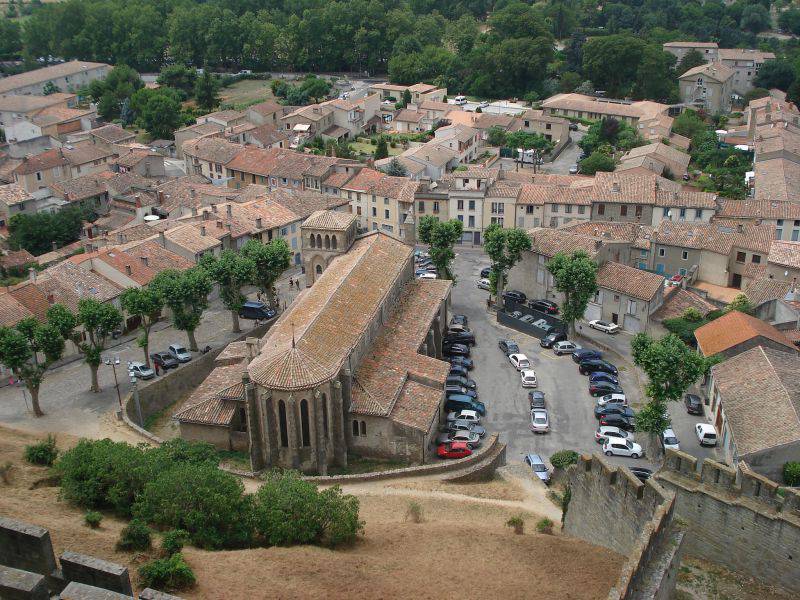
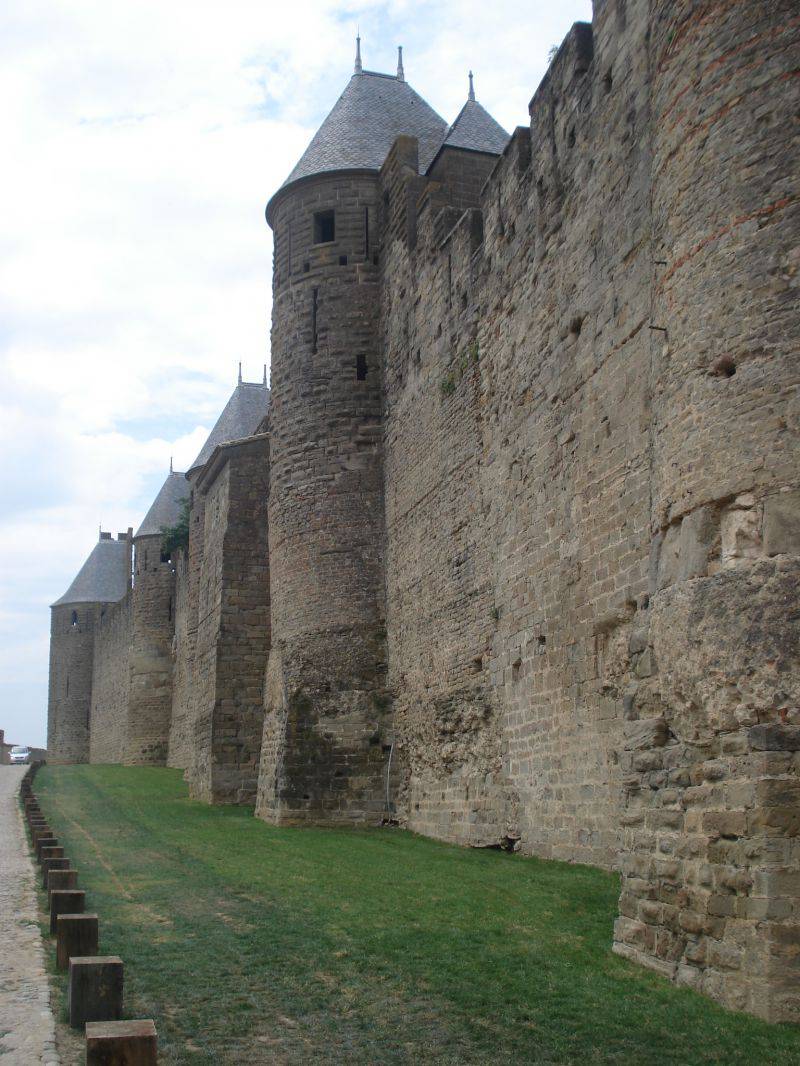
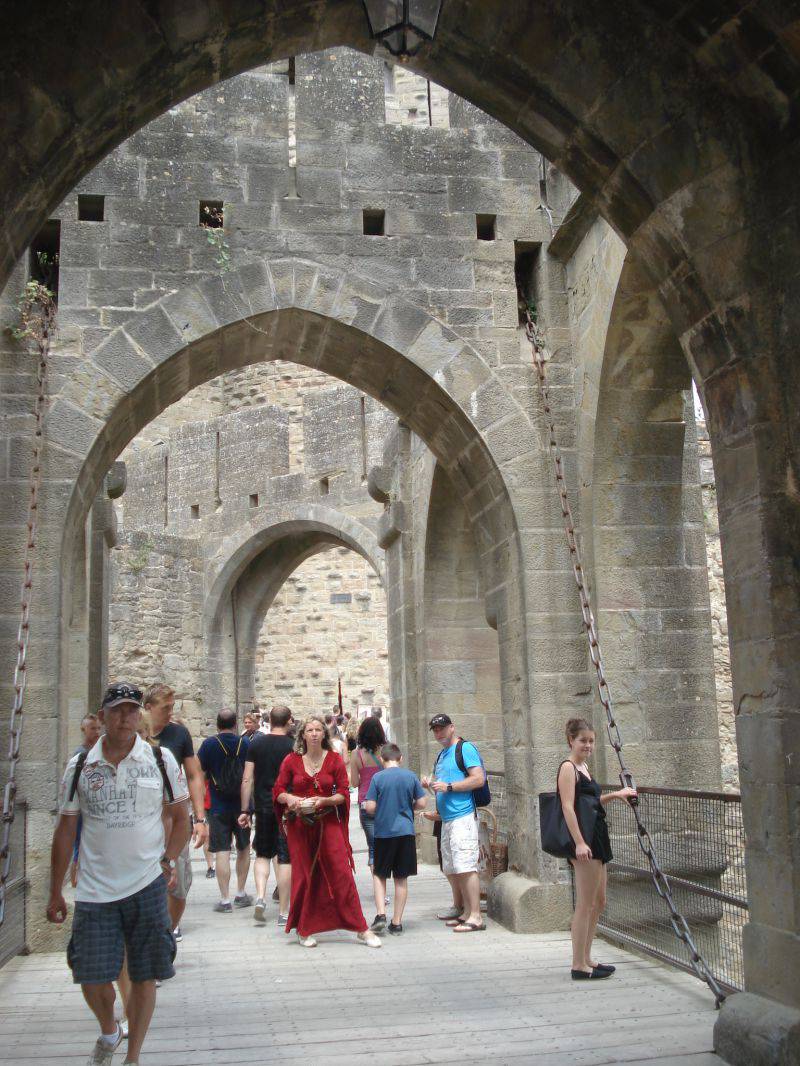
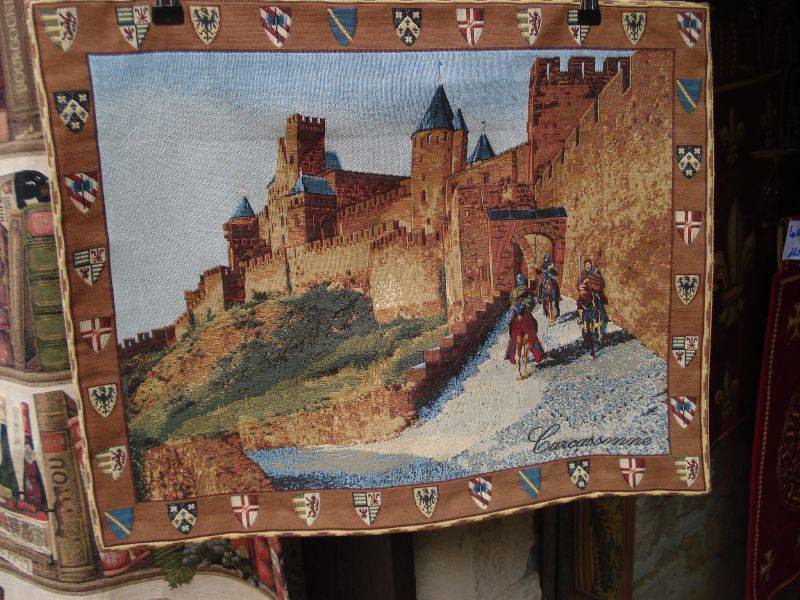
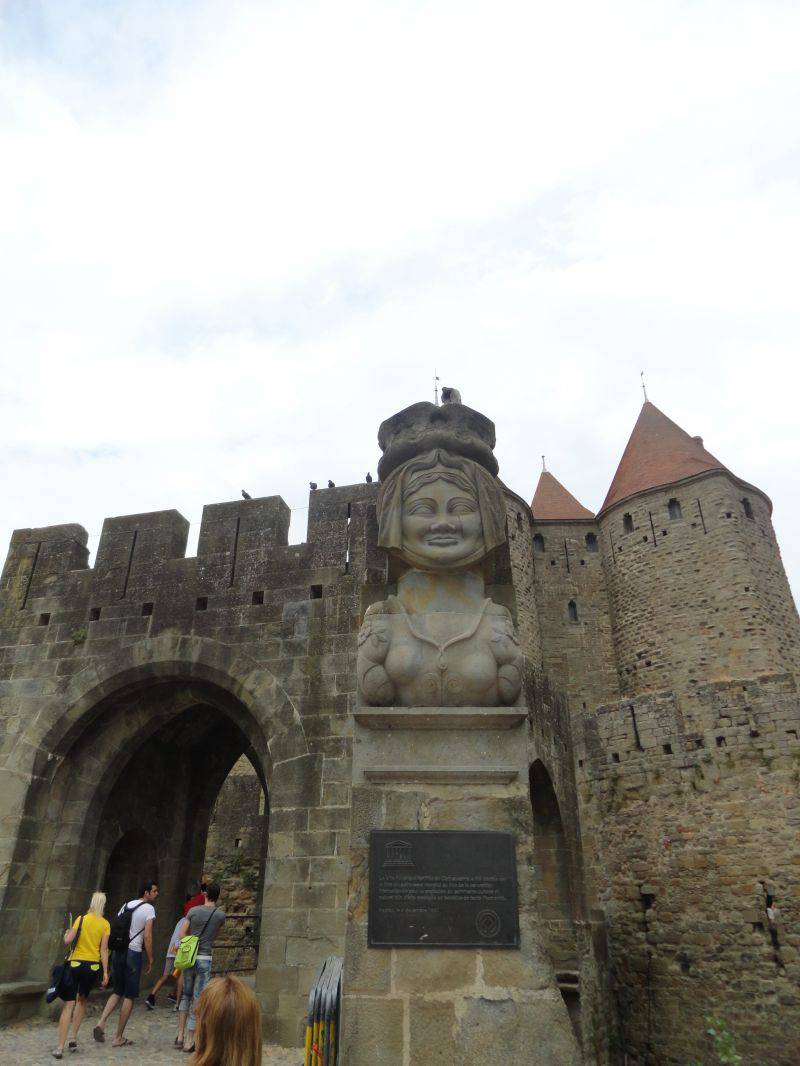
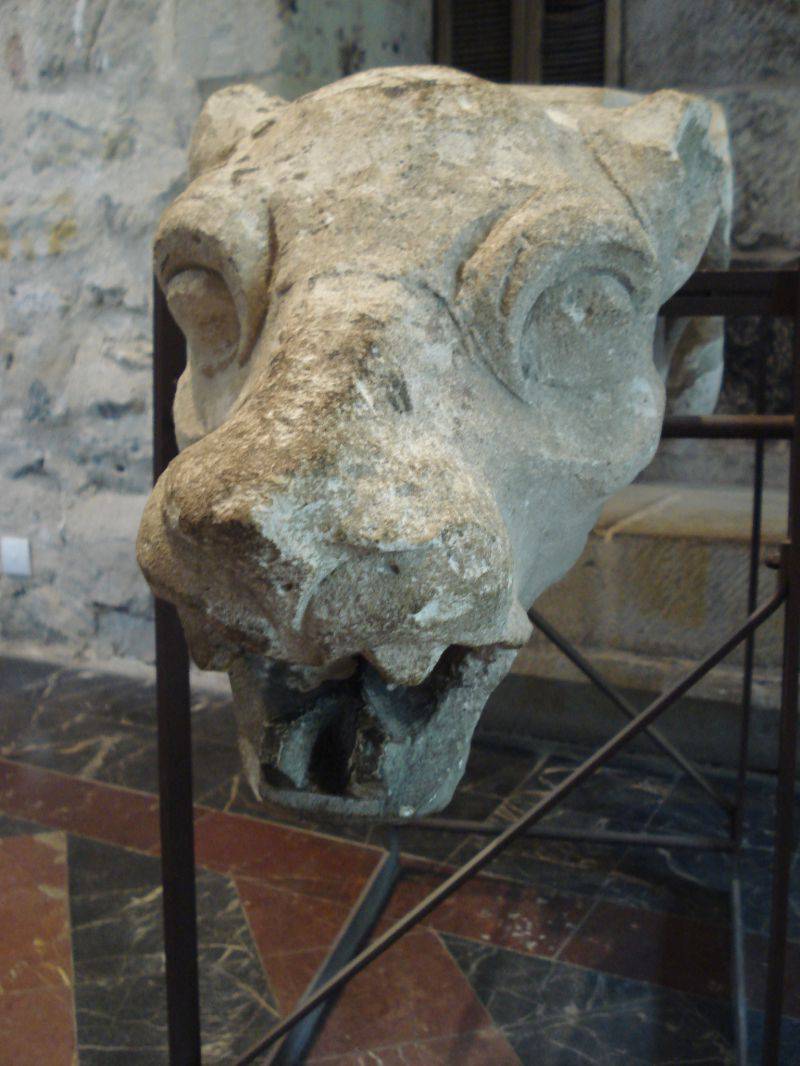
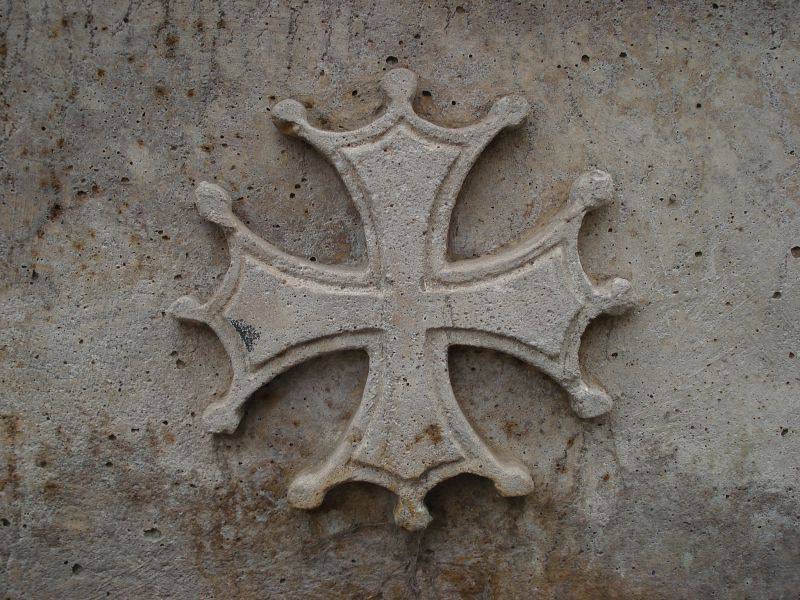
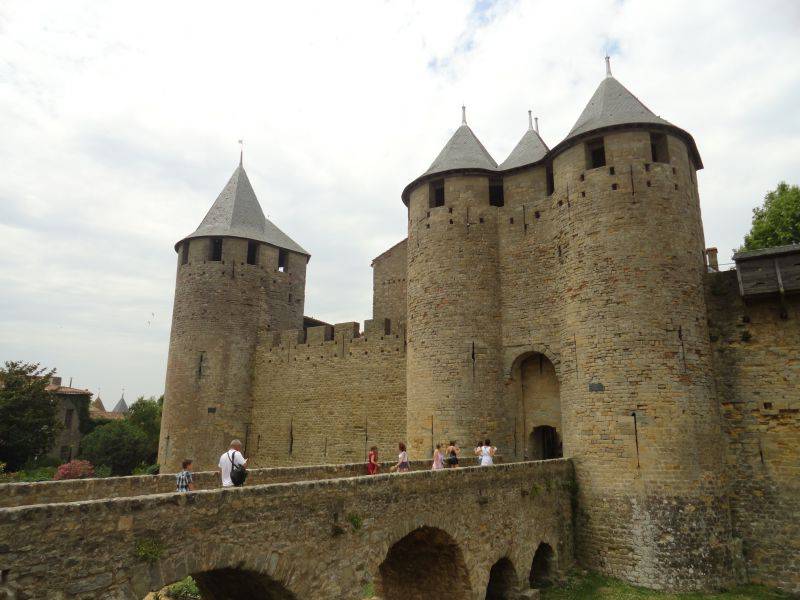
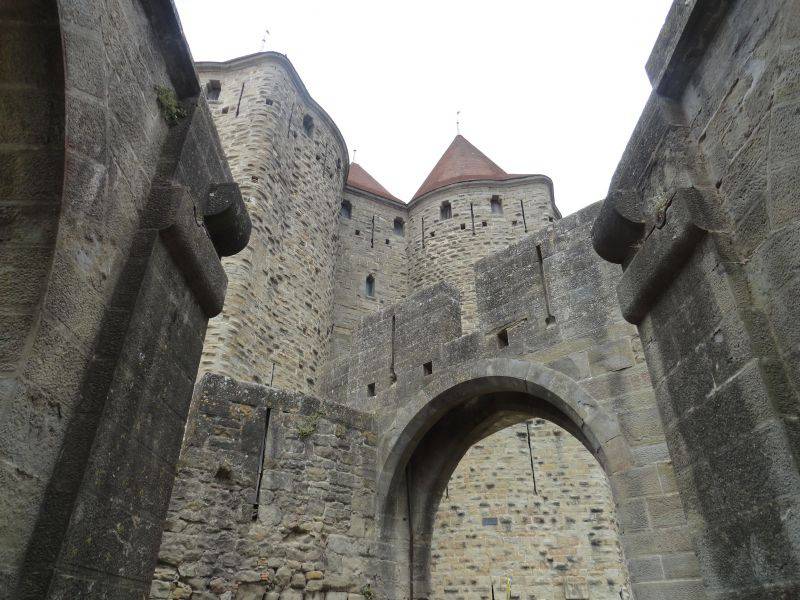
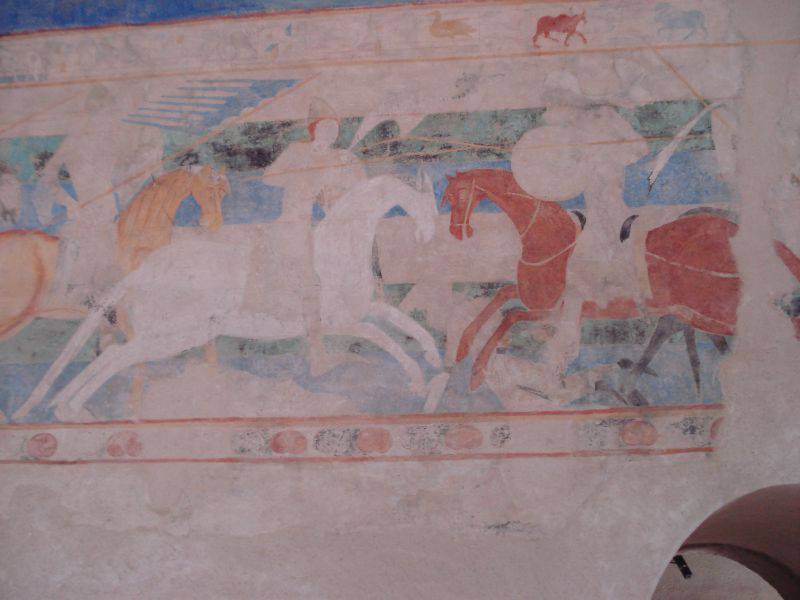
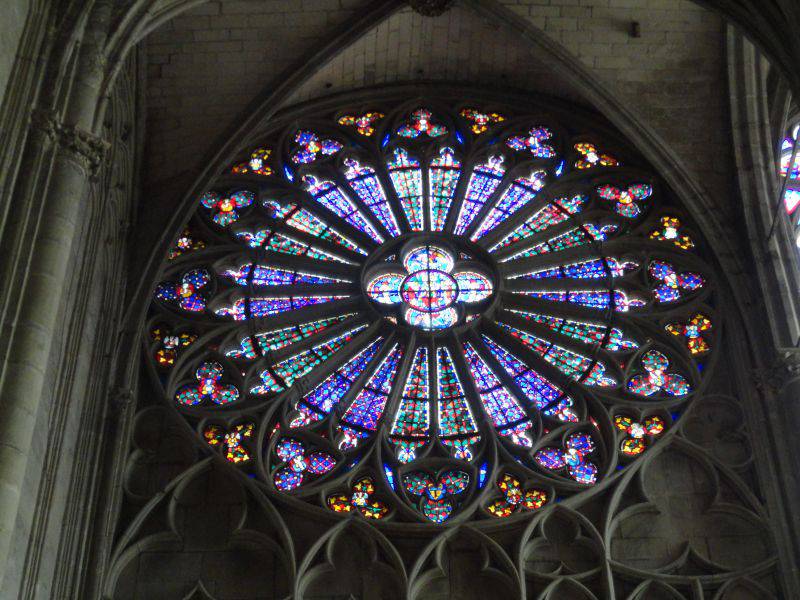
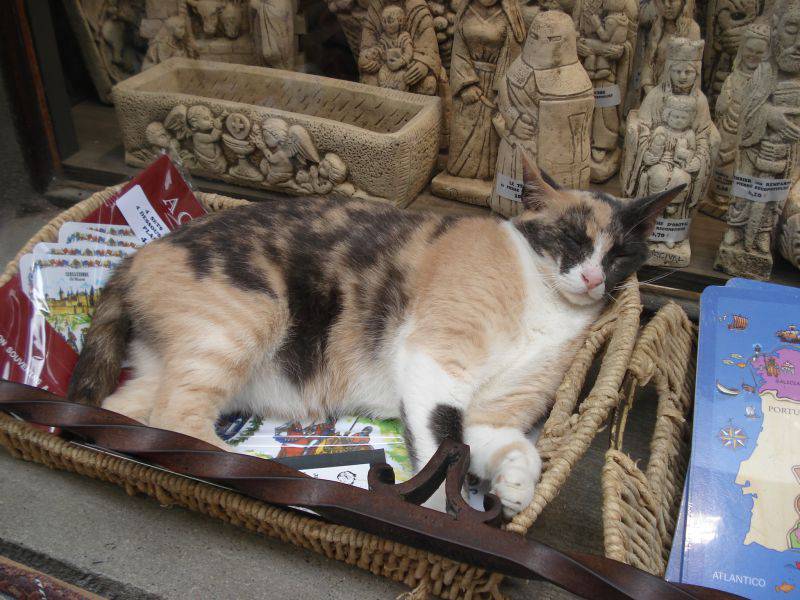
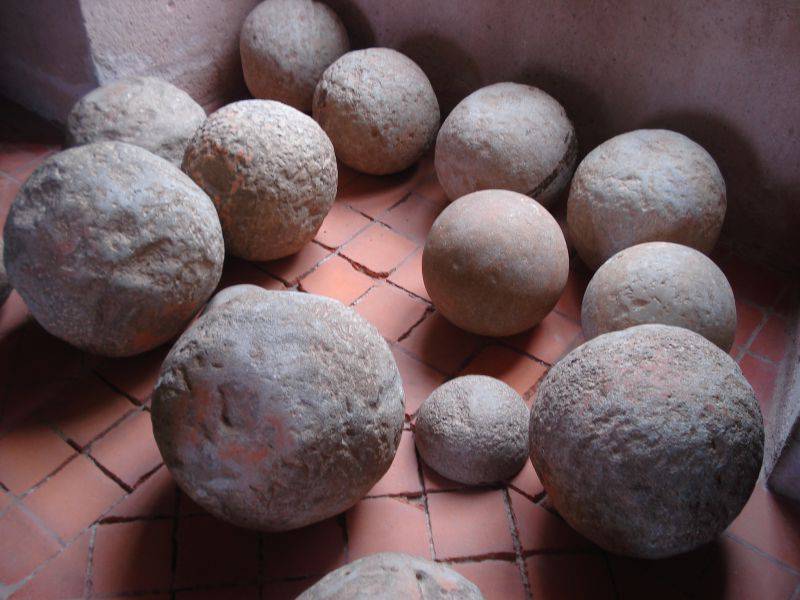
Information